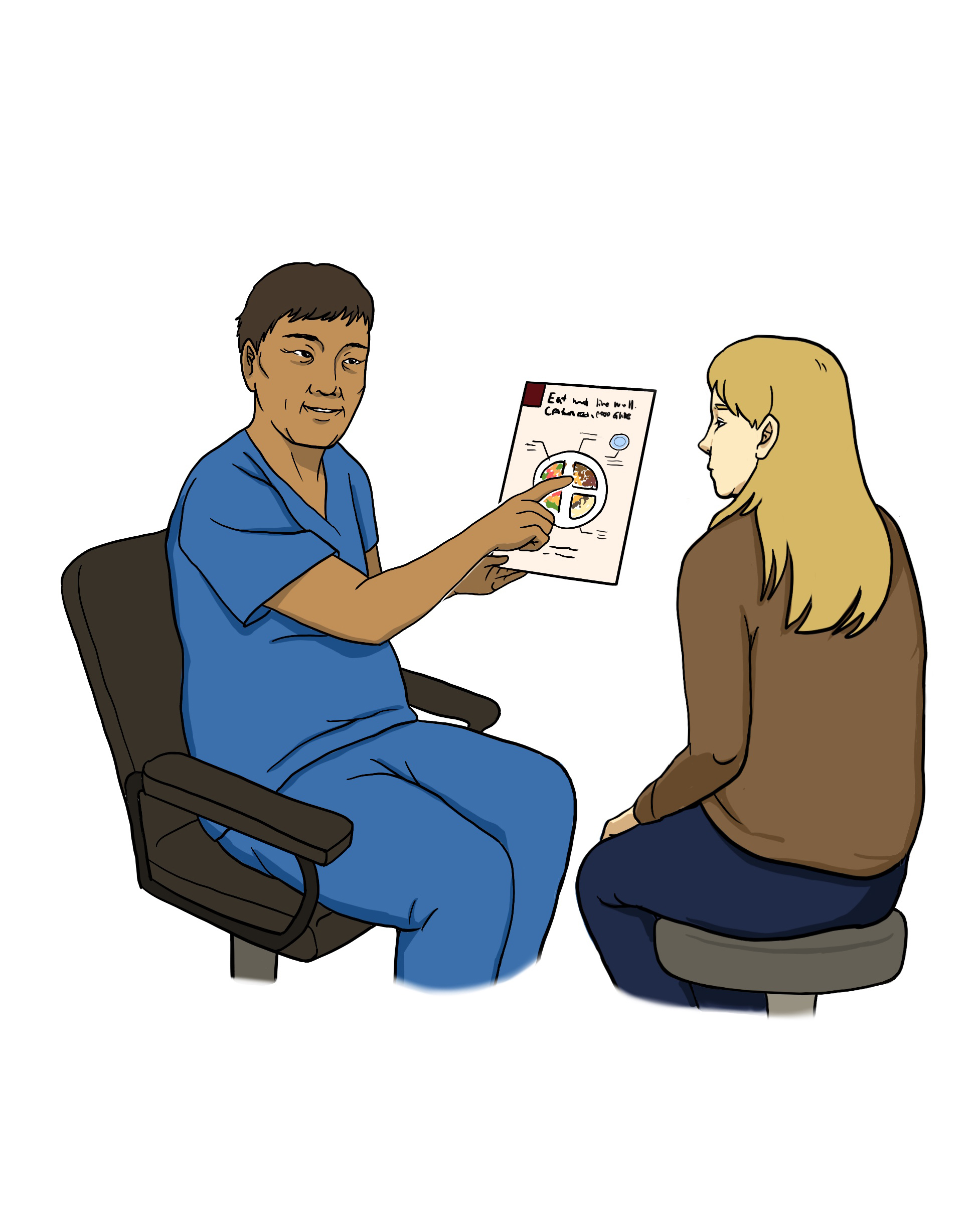Why Should You Care About the Food Guide?
As a health professional, it is important that you are familiar with Canada’s Food Guide 2019. Amidst rapidly changing food trends and evolving fads, the food guide offers health professionals concise and reliable information to inform professional practice. You can find the guide and related documents online at: Canada’s food guide. You will find that there are many resources, some directed at the health professional and some directed at the consumer (i.e., the client/family). A selection of the documents of interest include:
- The food guide snapshot
- Canada’s Dietary Guidelines for Health Professionals and Policy Makers
- Healthy eating recommendations
- Tips for healthy eating
- Recipes
As a health professional, part of your scope of practice is to engage in health promotion and disease prevention discussions with clients as illustrated in Figure 1.1. These discussions transcend primary care, secondary care, and tertiary care across the lifespan. They are important because optimal nutritional status is important for human development, healthy living, and to prevent and manage diseases. An imbalance in nutritional status can occur when:
- A client is not consuming the right balance and a diversity of nutrients for their body and their needs.
- A client is not eating enough and or is eating too much.
Healthy eating and what it looks like will depend on each person and many different factors such as their own body, the body’s microbiome, the client’s activity level, their health status, and the presence of diseases just to name a few.
One component of a comprehensive health promotion approach is an active dialogue about eating patterns (sometimes referred to as diet). Nutrition and eating patterns in healthcare often focus on food choices (eating “nutritious” and “not so nutritious” foods) and behaviours (eating “too much” or “too little”). While focusing on eating patterns may be useful for having individual discussions with clients, health professionals also need to be cognizant of the broader social context that informs nutrition and food security, also known as the social determinants of health.

By understanding the social determinants of health, health professionals can have meaningful discussions with clients about nutrition that resonate with their life circumstances. For example, your discussion may extend beyond just “what to eat” to also consider food security, access to fresh foods, ways to store it, and dietary risk which have implications for health and illness. Additionally, culture is an important determinant that influences eating patterns and food choices, and this may not necessarily translate to what is reflected in the food guide. Thus, health professionals should be curious about culture, equipped with skills to help clients better understand how their foods fit within, or even beyond, the food guide, and how their cultural eating practices can lead to healthy food decisions.
Although this resource does not focus specifically on social determinants of health, it seeks to highlight the social framework that surrounds the food guide. As a health professional, you need to be prepared to discuss eating, health, and the food guide with clients and their families across the lifespan. Understanding and interpreting the food guide is important at all stages of life; however, discussion between clients and health professionals are typical during early childhood development, pregnancy, and in the context of illness.
Points of Consideration
The term “diet” in this interpretation of Canada’s Food Guide 2019 is generally avoided, as the goal is health promotion and not necessarily weight loss. To some, the term “diet” suggests short-term, often restrictive, changes to eating patterns. While healthy eating is an objective of Canada’s Food Guide 2019, this resource does not promote a dichotomy of exclusively “healthy” and “unhealthy” eating patterns that reinforce labels that emphasize shame or blame. Instead, healthy eating should be thought of as a continuum, one that recognizes both the joy and importance of what and how we eat.
Intervening by preventing a disease or health problem before it arises.
Reducing the potential impact of a disease or health problem with screening, early detection, and intervention in the earliest phases.
Reducing the impact of an ongoing or chronic disease or health problem.
refers to the various microbes in the body such as bacteria, fungi, viruses, and genes, that inhabit one's body.
A range of factors (e.g., personal, socio-economic, environmental) that influence health and illness.

